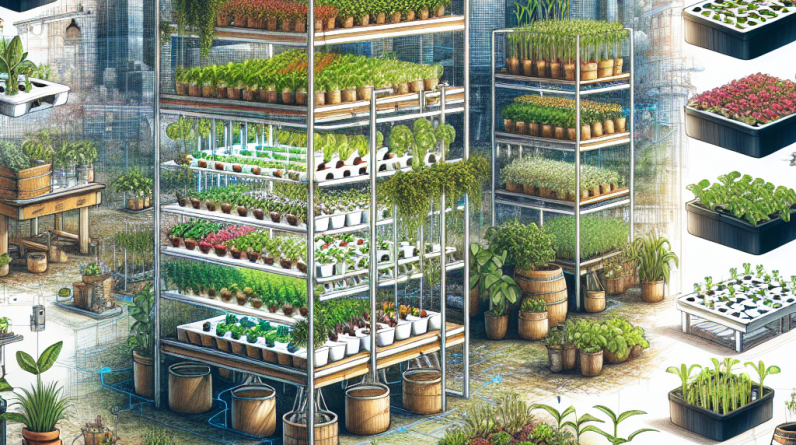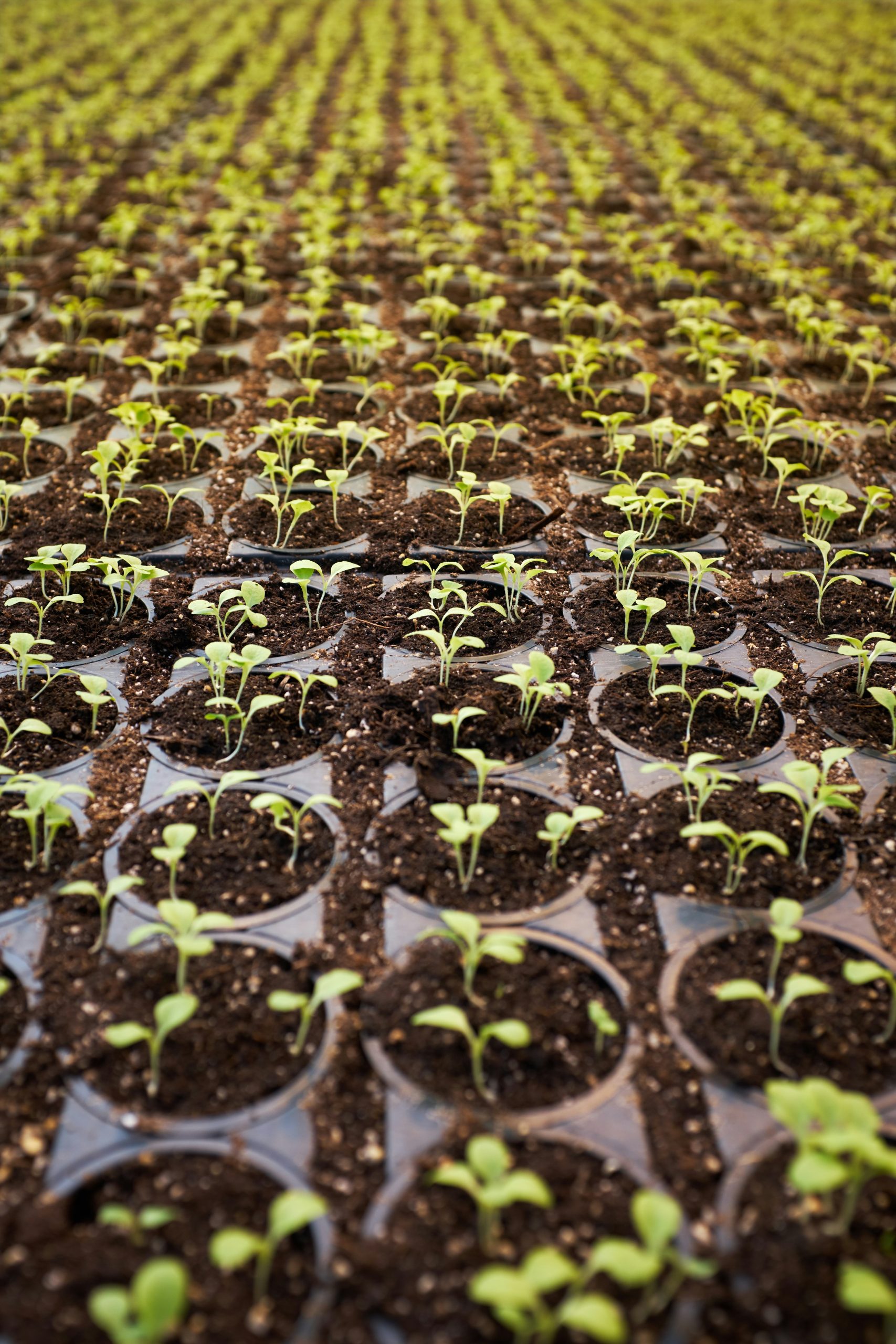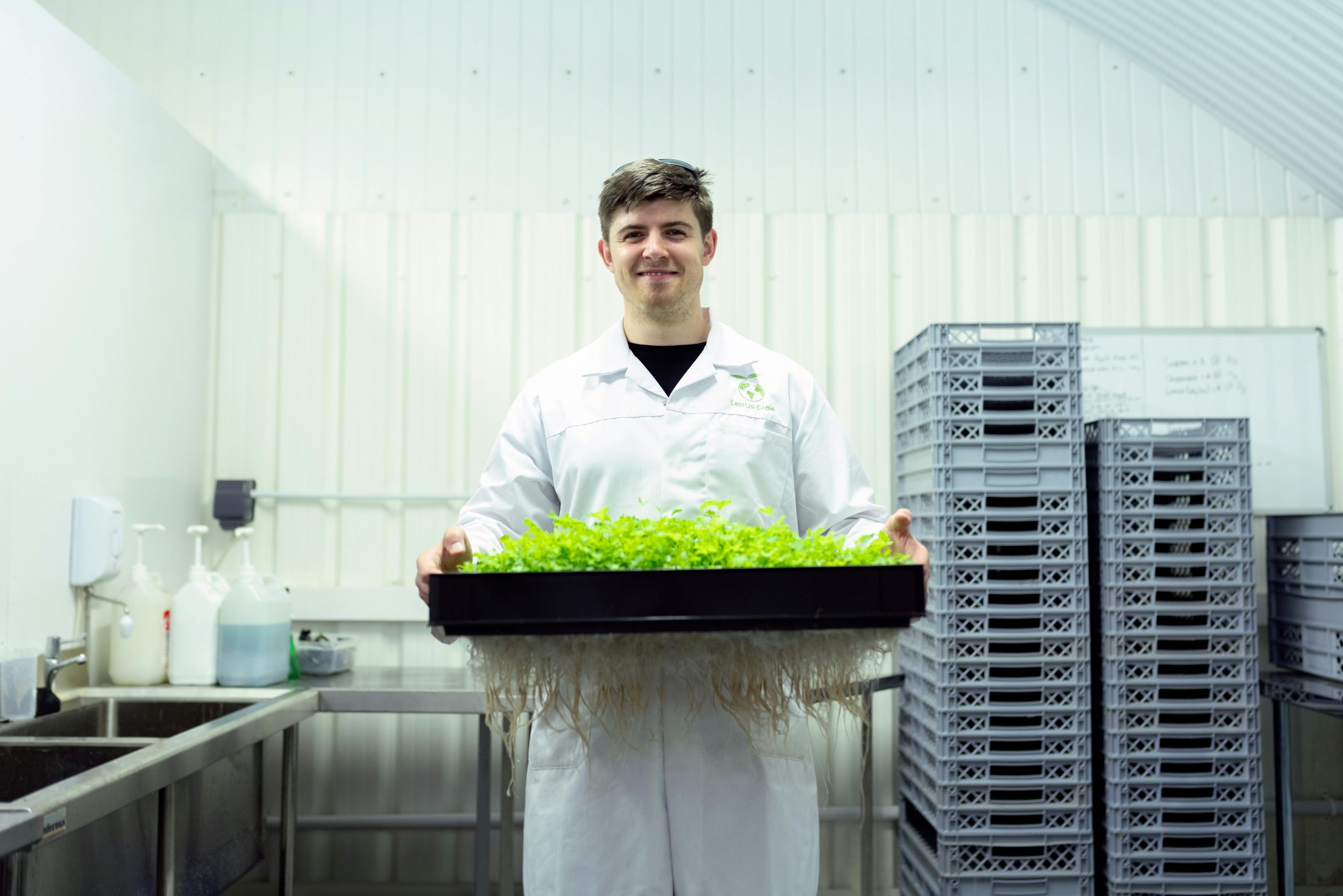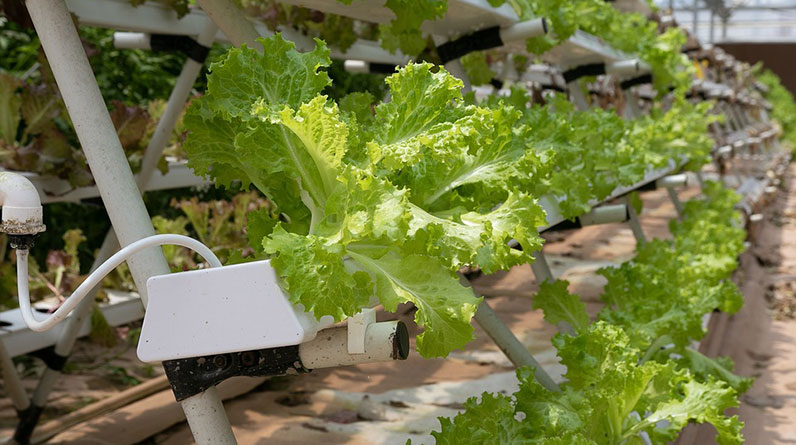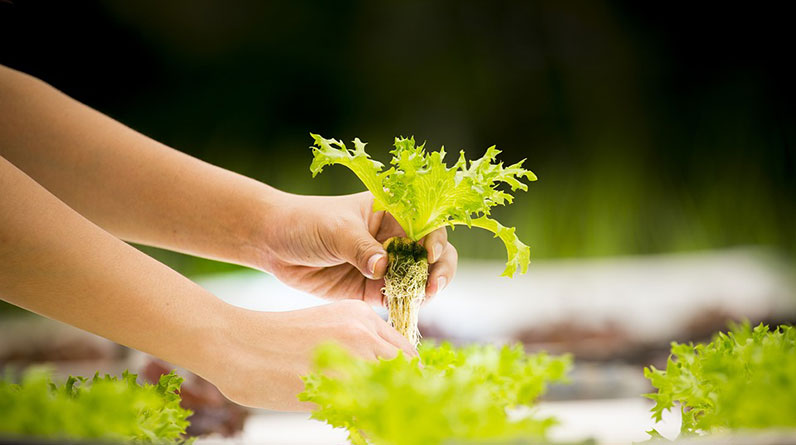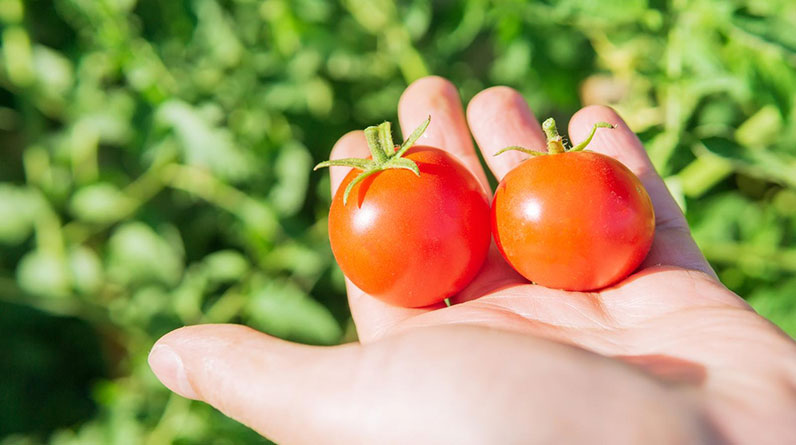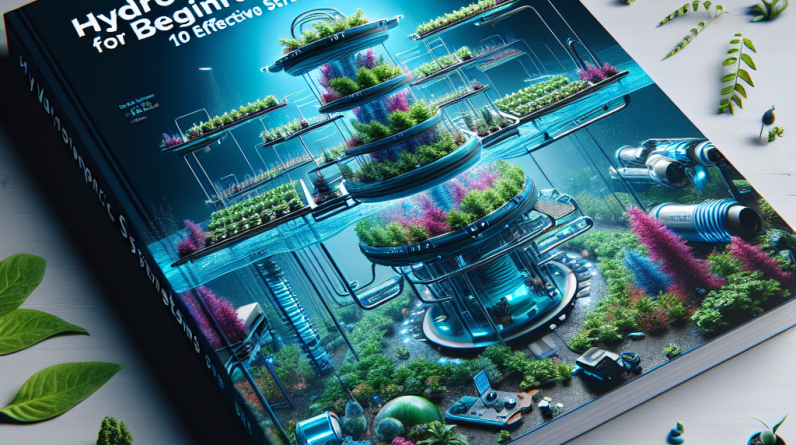
1. Choosing the Right Hydroponic System for Beginners
Types of Hydroponic Systems
One of the first steps in establishing your hydroponic systems for beginners is selecting the right setup. Popular options include nutrient film technique (NFT), deep water culture (DWC), wick systems, and drip systems. For beginners, NFT and DWC are often recommended because they are simple to maintain and efficient.
Each system has advantages and considerations. For example, DWC is known for its rapid growth rates and low cost, making it ideal for newcomers. Meanwhile, wick systems are passive and require minimal equipment, perfect for small spaces or indoor setups.
Assess your available space, budget, and the types of plants you want to grow. For instance, leafy greens like lettuce thrive in almost any hydroponic system, making them perfect for beginners exploring hydroponic systems for beginners in 2025.
Factors to Consider When Choosing a System
When selecting a hydroponic system, consider ease of use, scalability, and maintenance. An easy-to-install setup reduces initial frustration and increases long-term success. Also, think about your growth goalsâwhether growing a few herbs or a larger vegetable crop.
Cost is another critical factor. Many beginner systems are affordable and available online or at garden centers. Budgeting around $50â$200 is typical for initial equipment, but investing a bit more can ensure better durability and performance.
Also, educational resources and community support can make a big differenceâlook for systems with robust tutorials and active forums.
2. Understanding Nutrient Solutions
Essential Nutrients for Hydroponic Growth
Hydroponic systems for beginners require a well-balanced nutrient solution. Plants mainly need nitrogen, phosphorus, potassium, calcium, magnesium, and sulfur. These elements are vital for healthy growth and high yields in 2025.
Pre-mixed nutrient solutions designed specifically for hydroponics are readily available. Beginners should start with these to ensure proper dosing and avoid deficiencies. Adjustments can be made as you gain experience.
Monitoring your nutrient concentration with an EC meter helps maintain optimal levels, usually between 1.5â2.0 mS/cm for most leafy greens.
Preparing Your Nutrient Solution
Mixing your nutrient solution correctly is crucial. Always follow manufacturer instructions, and make sure to accurately measure and dilute nutrients before adding them to your water reservoir.
Change your nutrient solution regularly, typically every 1-2 weeks, to prevent the buildup of salts and ensure consistent nutrient availability. This routine is key to sustaining healthy plants in your hydroponic systems for beginners.
Remember, maintaining proper nutrient balance significantly impacts yield and plant health, especially when starting out in 2025.
3. Lighting Tips for Small-Scale Hydroponics
Choosing the Best Light Source
Lighting plays a critical role in successful hydroponic systems for beginners, especially in indoor environments. LED grow lights are highly recommended due to their energy efficiency, low heat output, and full-spectrum capabilities.
For small setups, a 300W LED panel can adequately light a 2×2 ft space. Ensure the light spectrum includes both blue and red wavelengths for vegetative growth and flowering, respectively.
Position the lights about 12-18 inches above the plants, adjusting as they grow. Proper lighting durationâgenerally 14-16 hours per dayâencourages healthy growth and maximizes yields in 2025.
Optimizing Light Usage
Using reflective surfaces or white walls around your grow area can distribute light evenly, reducing waste. Dimming or scheduling your lights automatically ensures consistency and saves energy.
If growing outdoors, consider the sunlight availability and use supplemental grow lights during darker months or in shaded indoor spaces. This flexibility is a significant advantage of hydroponic systems for beginners.
4. Managing pH and EC Levels
Importance of pH Control
Maintaining the right pH levelâusually between 5.5 and 6.5âis essential for nutrient uptake. Most plants in hydroponic systems for beginners flourish within this range, and pH fluctuations can cause deficiencies or toxicities.
Regular testing with a pH meter or test strips allows for precise adjustments. Adding pH up or pH down solutions helps keep levels stable.
In 2025, automated pH controllers and digital testers are increasingly popular, making precise control easier for beginners.
Managing Electrical Conductivity (EC)
EC measures the total dissolved salts in your solution, reflecting nutrient concentration. Keeping EC within 1.5â2.0 mS/cm is ideal for most leafy greens and herbs in hydroponic systems for beginners.
Over-concentrated solutions can burn roots, while low EC may limit growth. Regular checks and adjustments ensure optimal conditions.
Investing in reliable EC meters simplifies ongoing management and helps improve crop yields in 2025.
5. Selecting Growing Mediums
Popular Mediums for Hydroponics
Choosing the right growing medium is vital when setting up hydroponic systems for beginners. Common options include coconut coir, perlite, vermiculite, clay pellets, and rockwool. Each medium offers different benefits in terms of water retention and airflow.
For instance, clay pellets are reusable and provide excellent aeration, making them suitable for systems like ebb and flow or drip setups. Rockwool retains moisture well and supports root development.
Beginner-friendly mediums are usually inert, sterile, and straightforward to manage, reducing the risk of disease and pests.
Choosing the Right Medium for Your Plants
Consider plant type and system compatibility. Lettuce and herbs prefer well-draining mediums like coconut coir or clay pebbles, while root crops may need different approaches.
Always rinse and sterilize your chosen medium before use to prevent contamination. Replacing or replenishing media periodically maintains cleanliness and plant health in hydroponic systems for beginners.
6. Setting Up a Cost-Effective Sistema
Budget-Friendly Equipment Tips
You don’t need expensive equipment to start your hydroponic journey. Many beginner systems can be assembled using household items or affordable kits. For example, plastic storage containers can serve as nutrient reservoirs.
Lighting can be supplemented with basic LED lights or even compact fluorescents. DIY drip or wick systems often require minimal plumbing and almost no special tools.
Purchasing components secondhand or during sales can save you money, making hydroponic systems for beginners more accessible in 2025.
Scaling Up Gradually
Start small and expand as you gain experience. Keeping costs manageable reduces risk and enables learning without large upfront investments. Many successful hydroponic growers began with just a few plants and grew their setup over time.
Use this conservative approach to troubleshoot and optimize your system before investing in larger or more complex configurations.
7. Common Mistakes and How to Avoid Them
Overfeeding and Underfeeding
One of the biggest pitfalls for beginners is improper nutrient management. Too much fertilizer can burn roots, and too little can stunt plant growth.
In 2025, precise measurement tools and pre-made solutions help prevent these issues. Regular monitoring and following feeding schedules allow you to avoid stress on your plants.
Always start with lower concentrations and gradually increase as your plants respond positively.
Ignoring System Maintenance
Neglecting regular checks on pH, EC, and system cleanliness leads to disease and poor yields. Establish a routine for testing and cleaning your equipment weekly.
A clean system promotes healthy root development and maximizes crop production in your hydroponic systems for beginners.
Developing good habits early prevents costly problems later on.
8. Incorporating Automation and Smart Tech
Using Timers and Sensors
Automation makes managing hydroponic systems for beginners much easier. Using timers for lights, pumps, and fans creates consistent conditions, reducing manual effort.
Sensors for pH, EC, and temperature can connect to smartphone apps, providing real-time data and alerts. This tech simplifies troubleshooting and ensures optimal plant health.
By 2025, smart systems are becoming more affordable, making hydroponic automation accessible for hobbyists and small-scale growers.
Smart Systems for a Hassle-Free Experience
Investing in integrated solutions streamlines your grow operation. Automated dosing pumps can maintain nutrient levels, while LED controllers optimize light schedules.
This blend of technology and horticulture results in higher yields, less waste, and more leisure time, which is especially beneficial for beginners learning to manage hydroponic systems for beginners in 2025.
9. Maintaining Your Hydroponic System for Longevity
Regular Cleaning and Inspection
To keep your hydroponic systems for beginners running smoothly, cleaning the reservoir, tubing, and growing containers regularly is essential. This prevents algae, bacteria, and other pathogens from taking hold.
Inspect pumps, filters, and lighting fixtures frequently for wear and tear. Replacing parts proactively reduces downtime and maintains plant health.
Maintaining a clean system also extends equipment lifespan, saving you money over time.
Seasonal Adjustments and Troubleshooting
Adjust your nutrient formulations, lighting, and environmental controls seasonally. Different plants and growth stages require tailored conditions.
Pay attention to signs of deficiencies, pests, or disease. Early intervention ensures continuous harvests and successful experiences with hydroponic systems for beginners.
10. Learning Resources and Community Support
Online Courses and Tutorials
In 2025, numerous online platforms offer courses tailored for hydroponic systems for beginners. These resources cover everything from setup to advanced plant care, providing a solid foundation.
Joining forums, social media groups, and local gardening clubs can connect you with experienced growers willing to share tips and troubleshoot issues together.
Continuous learning is key to long-term success in hydroponics, especially as technology and techniques evolve.
Recommended Books and Websites
Several reputable sources offer extensive guides on hydroponic cultivation, such as university extension sites and industry blogs. These materials keep you updated on the latest trends and research in 2025.
Bookmarking trusted websites ensures you always have access to accurate, up-to-date information for your hydroponic systems for beginners.
Remember, building your knowledge base is as important as building your system.
Conclusion
Getting started with hydroponic systems for beginners in 2025 has never been easier, thanks to innovative tools, affordable equipment, and abundant resources. Whether youâre growing herbs on your windowsill or vegetables in your backyard, understanding the key strategies outlined above will help you succeed. Remember, patience and continuous learning are essential as you refine your setup and plant care practices. Embrace the journey into soilless gardening, and you’ll enjoy fresh, nutritious produce all year roundâright at home!
Frequently Asked Questions
- What are the best hydroponic systems for beginners in 2025?
- Systems like deep water culture (DWC) and wick setups are popular for beginners due to their simplicity, affordability, and ease of maintenance.
- How do I maintain optimal pH and nutrient levels?
- Regular testing with pH and EC meters, along with timely adjustments, ensures your plants receive nutrients in the correct proportions, promoting healthy growth.
- Are hydroponic systems for beginners cost-effective?
- Yes, starting small with budget-friendly equipment and gradually scaling up makes hydroponics accessible and economical for most beginners.
- Can I grow year-round with hydroponic systems for beginners?
- Absolutely! Indoor hydroponic setups with proper lighting and climate control allow for year-round cultivation regardless of outdoor conditions.
- What resources are recommended for learning more about hydroponics?
- Online tutorials, community forums, books, and courses are excellent sources to deepen your understanding and troubleshoot issues effectively.



